Chris Riley tests the 2022 Toyota GR Yaris Rallye edition with pricing, specs, ride and handling, safety, verdict and everything the over-50 driver needs to know.
Summary: The Toyota GR Yaris is aimed squarely at the performance enthusiast. For some buyers, it will be too hard core for everyday use, but enthusiasts will love it. If they can afford it.
2022 Toyota GR Yaris Rallye Edition
Pricing: $54,500 (plus on road costs)
Warranty: Five-years, unlimited km
Safety: untested
Engine: 1.6-litre turbocharged 3-cylinder petrol engine
Power: 200kW at 6500rpm
Torque: 370Nm at 3000-4600rpm
Transmission: 6-speed manual, all-wheel drive
Body: 3995mm (long); 1805mm (wide); 1455mm (high)
Weight: 1280kg
Towing capacity: 900kg
Wheels: 18-inch alloy
Tyres: 225/40/R18 Michelin Pilot Sport (see text)
Ground clearance: 124mm
Turning circle: 10.8mm
Fuel tank: 50 litres
Thirst: 7.6L/100km (unleaded 98 RON)
Consumption on test: 8.1/100km (765km)
seniordriveraus consumption on test: not tested
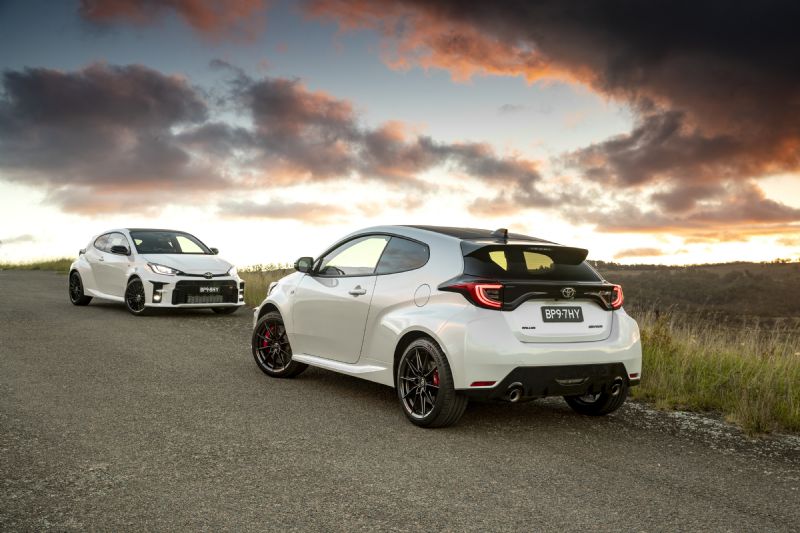
[review]
It’s taken us longer than anticipated to catch up with Toyota’s pocket rocket, the GR Yaris – but it was worth the wait.
With 200kW of power, a manual change, all-wheel drive and tipping the scales at 1280kg, it puts away the dash in just 5.2 seconds.
Not only that, we’re driving the hyper Rallye edition with extra bits, but as entertaining as it might be this hatch doesn’t come cheap – not at more than $50,000.
What’s it cost?
The new Rallye edition, priced from $54,500, introduces lightweight components and performance parts, specifically designed for drivers who want to experience a higher level of performance.
Key upgrades include circuit-tuned GR suspension, Torsen limited-slip differentials on the front and rear axles, an ultra-light high-performance wheel-and-tyre package and improved front brake ducting to improve cooling.
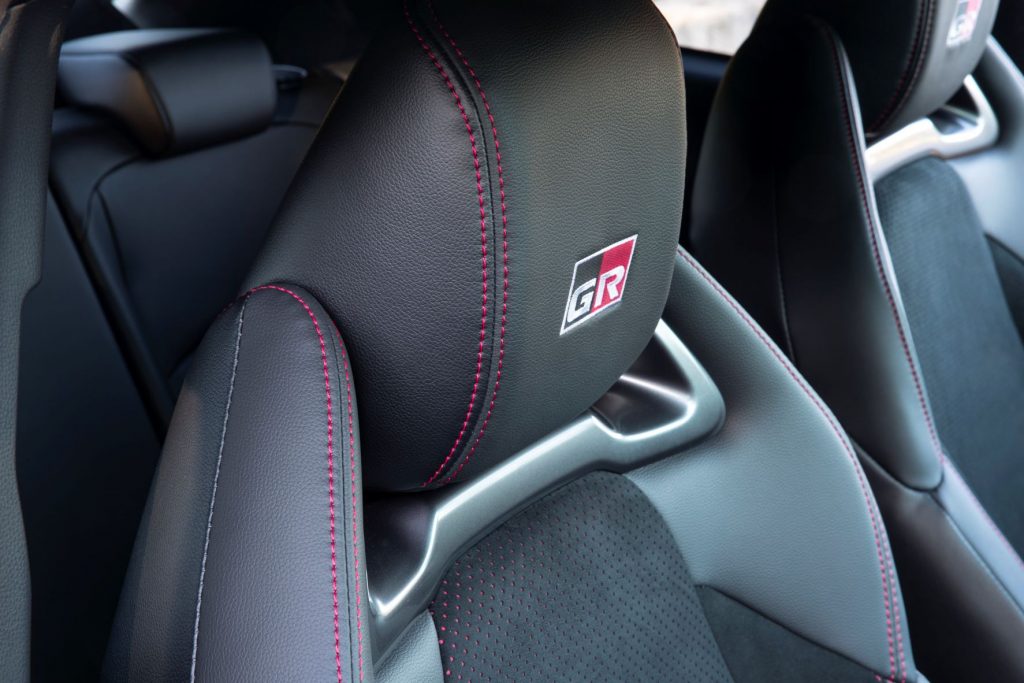
The front MacPherson strut suspension from the GR Yaris has been upgraded with stiffer springs and anti-roll bars to realise the new model’s full performance potential.
Rallye exterior is distinguished by bespoke Frosted White crystal pearl paint and bright red brake callipers bearing the Toyota Gazoo Racing logo.
Inside, the Rallye supports enthusiastic driving with synthetic leather-accented sports front seats that feature large bolsters, red stitching and perforated Ultrasuede inserts.
A uniquely numbered GR Yaris Rallye plaque adorns the centre console with an additional Rallye badge on the rear hatch.
Standard kit includes dual-zone climate air, suede and leather trimmed sports seats, heated front seats, smart entry and start, and an auto-dimming rear mirror.
Infotainment is provided by 8-speaker JBL audio and a 7-inch touchscreen display, with Bluetooth, voice recognition, DAB+ digital radio, Apple CarPlay and Android Auto, along with one USB and 12V outlet in the front.
Rallye features the latest Toyota Safety Sense technologies including a pre-collision safety system with autonomous emergency braking, intersection assistance, high-speed adaptive cruise control, lane trace assist and road-sign assist.
Other safety features include ventilated disc brakes, emergency steering assist, auto high beam, blind spot monitor, head-up display, reversing camera and six airbags.
But, while the standard Yaris gets a five-star safety rating, the GR is a significantly different vehicle and this rating does not apply.
Rallye is covered by the five-year unlimited kilometre warranty, seven-year extended engine and driveline warranty, and capped-price servicing for the first six services within a 6-month/10,000km interval at $260 a pop.
You also receive complimentary map upgrades for three years.
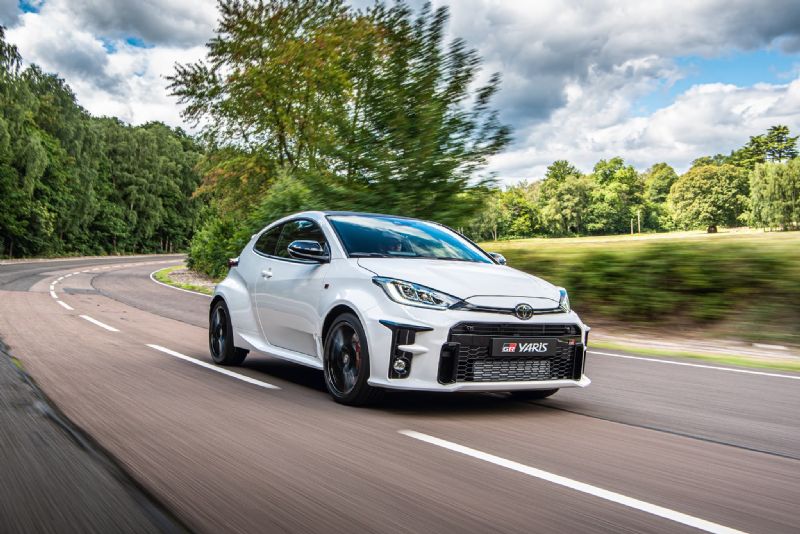
What’s it go like?
GR Yaris is the car they used to homologate Toyota’s World Rally Championship contender.
It has three doors, is slightly longer, much wider and sits lower with a rather cramped back seat that has seatbelts for two passengers.
The fact that it has only three exterior parts in common with the donor – mirrors, headlights and tail lights – speaks volumes about the depth of the design process.
The platform for this car combines the front end of a standard Yaris with the rear of the GA-C platform which is used for Corolla.
With its wider stance, pumped out guards and beefy 225 series rubber, GR Yaris looks more than just tough – it looks ready to bite.
The Rallye edition is powered by the same 200kW/370Nm 1.6-litre single-scroll turbocharged three-cylinder petrol engine as GR.
And Toyota reckons it’s the most powerful, series production, three-cylinder powerplant in the world, able to propel the car from rest to 100km/h in 5.2 seconds – maybe even quicker according to some sources.
Top speed is electronically limited to 230km/h.
Power is fed to all four wheels through the clever GR-FOUR all-wheel drive system via a six-speed intelligent manual gearbox (iMT) with rev-matching for up and down shifts.
GR-FOUR AWD is designed to optimise torque through a high-response coupling and electronically controlled multi-plate clutch located ahead of the rear differential.
It features three driver-selectable modes – Normal, Track and Sport – that deliver a different split of torque front to back: 60:40, 30:70 and 50:50 respectively.
Two Torsen limited-slip diffs control the distribution of torque between left and right wheels to deliver natural and direct car control with enhanced stability, cornering performance and grip.
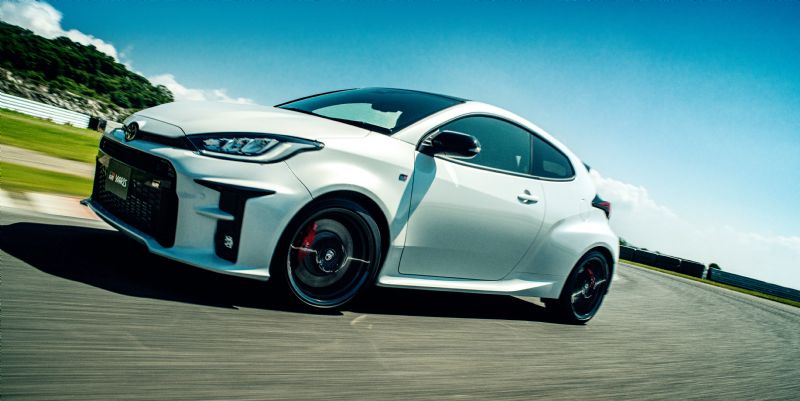
A plastic, carbon-fibre reinforced roof, aluminium bonnet, doors and tailgate, with liberal use of lightweight, high-tensile steel underscore the car’s performance potential.
It’s also equipped with lightweight, high-strength 18-inch BBS forged alloys.
Michelin Pilot Sport 4S high-performance 225/40ZR18 tyres are standard, but for some reason our test vehicle had been fitted with Dunlop SP Sport Maxx (the tyre they fit to the non-Rallye model).
You won’t find a spare in the back either. A puncture repair kit is supplied instead, to save weight.
It could have something to do with the fact the battery is located under the boot floor (to make way for a larger air cleaner under the bonnet).
The driver-focused cabin is fitted with a small-diameter, leather-wrapped steering wheel with fingertip controls, leather-wrapped short-throw gear shifter and handbrake, plus aluminium pedals.
Round analogue speedo and tacho dials sit either side of a centre 4.2-inch driver info display that offers an array of details including turbo pressure and gear-shift indicators.
An adjustable driver’s seat and tilt-and-telescopic steering column make it easy to find the ideal driving position.
The two rear seats feature ISOFIX anchor points and are split 60:40 to expand the 141-litre luggage space to a maximum 737 litres when folded.
With a 50-litre tank, Rallye takes the good stuff, 98 RON unleaded and uses a claimed 7.6L/100km.
We clocked up 765km behind the wheel at the rate of 8.1L/100km, with a mix of highway and local roads.
GR Yaris is a treat to drive.
Buckle in, fire it up, slip the transmission into gear and away you g-o-o-o!
Tommi Makinen and a bunch of rally types including ol’ Mr Toyoda himself reportedly had input into the setup of this car, and boy, does it show.
It’s an incredibly well-balanced package, with a stack of torque for a car this size that is available across a wide flat rev range – from 3000 to 4600 revs.
Grip and acceleration are impressive and leaves me wondering what this car is like on dirt? After all, that’s what it’s designed for …
Incidentally, did you know the stopping distance on dirt is only 10 percent more than bitumen – you’d think it would be more.
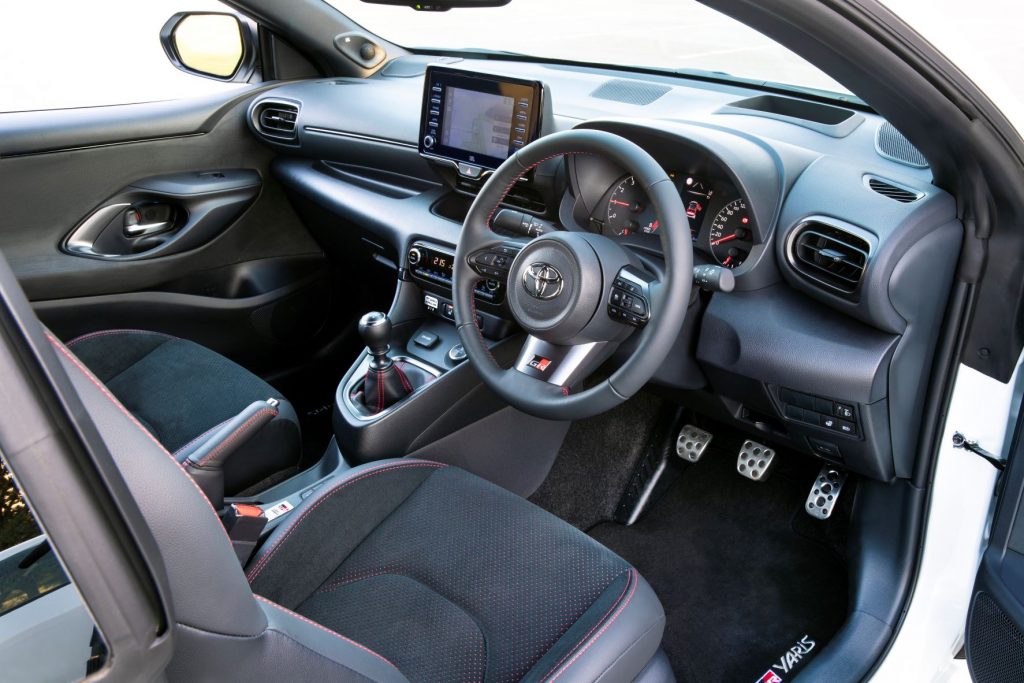
Competition grade brakes bite hard and keep on biting, time and time again with no sign of fade.
The manual change is a keeper, slick, short throw and easy to use with tightly grouped pedals for heel and toe braking, with rev matching for the rest of us.
Steering is direct and responsive, delivering plenty of feedback about what’s going on below the car.
Two large exhaust outlets deliver a neighbourhood-rousing soundtrack, but like the 86 the engine note has been artificially enhanced through the audio system.
Nothing unexpected here, but here’s the takeaway.
We were expecting a rock-hard sports ride, akin to a race car – but the ride is surprisingly supple and very liveable.
It’s not all peaches and cream though.
GR Yaris is a tight fit, feels plasticky in parts and there’s no parking sensors of any kind – front or back.
The blind spot system in our test vehicle kept triggering for no apparent reason while the centre info panel kept warning us to avoid ”excessive acceleration”.
At first, we thought it might have been the outside temperature. But when it happened again on a cold, frosty Orange, NSW, morning, we had to rule that out.
Still, as an all-rounder the drive experience is more convincing than an STI.
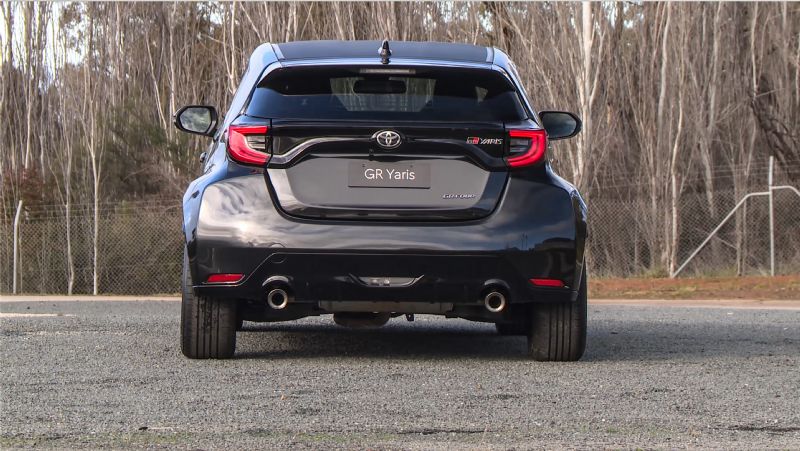
What we like
- Looks terrific
- Comfy seats
- Super performance
- WRX alternative
What we don’t like
- Takes premium unleaded
- Tyre inflation kit
- No sensors front or back
- False warnings from blind spot
- Avoid excessive acceleration warnings
Things over-50s need to know
We can’t recommend this car to older folks.
It’s a lot of fun to drive, but it’s not designed for comfort.
It has two doors; the interior is tight for space; and the high-sided sports seats can be a difficult target for the old derriere.
Oh, and it’s available only with a manual transmission.
But the GR Yaris Rallye edition certainly packs a punch and is proof positive that good things do come in small packages – especially if you like your driving fun.
In the domestic Japanese market, they get a front-wheel drive look-a-like, called the GR Yaris RS – with an 88kW four-cylinder engine.
Glad we don’t take that (or perhaps it will find its way here as the Yaris GR Sport).
Stranger things have happened.
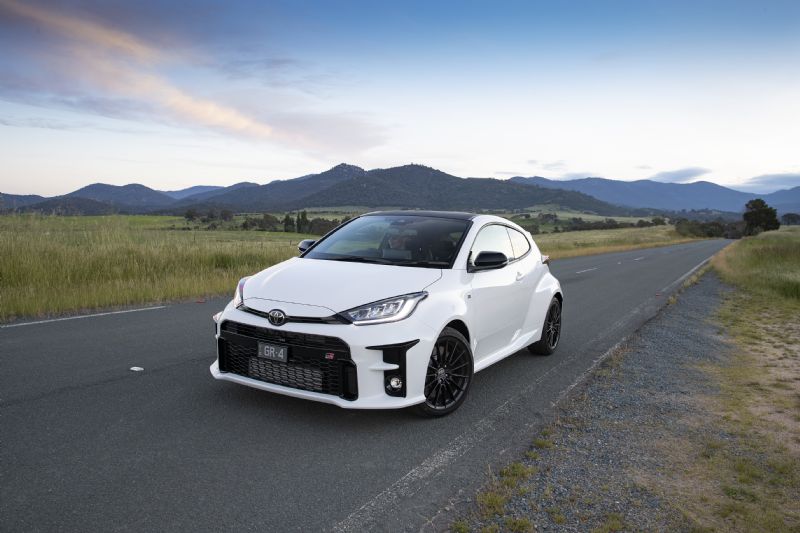
seniordriver comments
Cars designed to perform on the race track by definition are compromised for everyday use, and the Toyota GR Yaris is no different. For some of us, that’s a trade-off we’re willing to make, but many other people find a performance car too harsh, too uncomfortable and too impractical.
Once again, we have to admit to not having driven the GR Yaris, despite repeated requests to Toyota, so we’ll have to trust Chris’s judgement.
But some things are not open to interpretation. Toyota has really pushed the boat out on pricing for all its GR variants. Fortunately for them, it doesn’t seem to have limited demand, so obviously they have made the right pricing decisions, but we’d be looking at some other much cheaper alternatives unless you have your heart set on the Yaris.
It’s not hard to justify the price premium for the GR, and its four-wheel-drive, limited slip differentials front and rear, and improved brake ducting are all major advantages over the competition. In fact, the GR Yaris is so different to the normal Yaris that the ANCAP rating doesn’t apply, and it shares only three exterior parts with its more modest sibling.
We’re not sure about the increasingly common approach to “enhancing” the exhaust note through the sound system … a little too PlayStation for our liking.
So what would we look at as well as the GR Yaris?
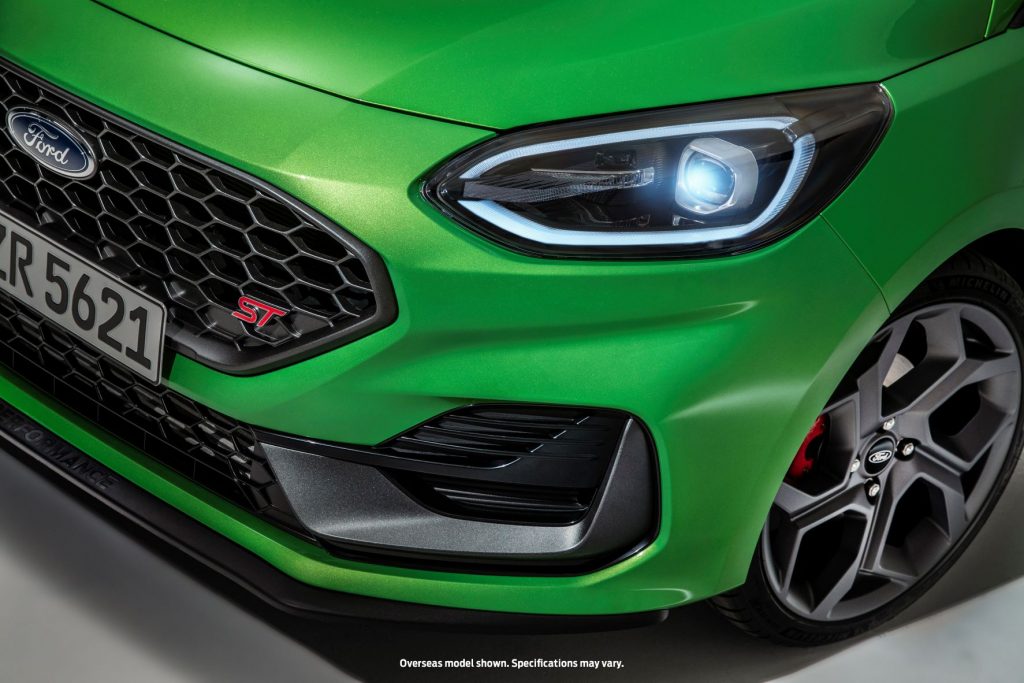
We’d be tootling off to our local Ford dealer to test drive the superb little Fiesta ST. Like the Yaris, the Fiesta gets a three-cylinder turbocharged engine, 100cc smaller in capacity at 1.5-litres. Power is down on the Toyota at 147kW and torque also suffers by comparison at 290kW. On paper, those differences seem significant, but in our experience, the difference is less obvious on the road. The Fiesta’s major disadvantage is that it’s only available in front-wheel drive. For many, that will be offset by the inclusion of five doors, making it a lot more practical for everyday duties.
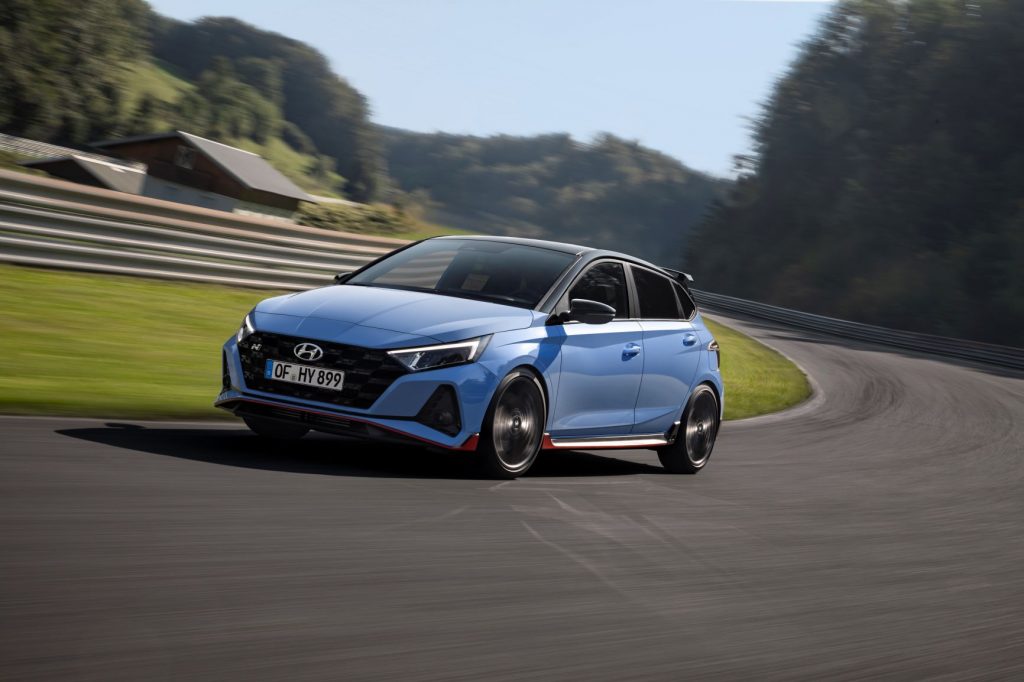
After we’d indulged ourselves in the Fiesta, it’s off to the nearest Hyundai dealership to try out the surprisingly appealing i20N. The N franchise has been attracting strong loyalty from buyers who know what makes a hot hatch, and recognise value. The i20N kicks off just $700 more than the Fiesta at $32,990, a long way short of the GR Yaris’ $54,500 asking price, although it too is only available with front-wheel drive. Once again, there’s the convenience of five doors and the real pleasure of pedalling a tight and responsive little car. Power and torque are within a whisker of the Fiesta (but still well short of the Yaris) at 150kW and 275Nm. Again, most people won’t notice the difference. And if you’re concerned about fuel costs (and who isn’t?), the i20N will save you plenty by running happily on 91 RON.
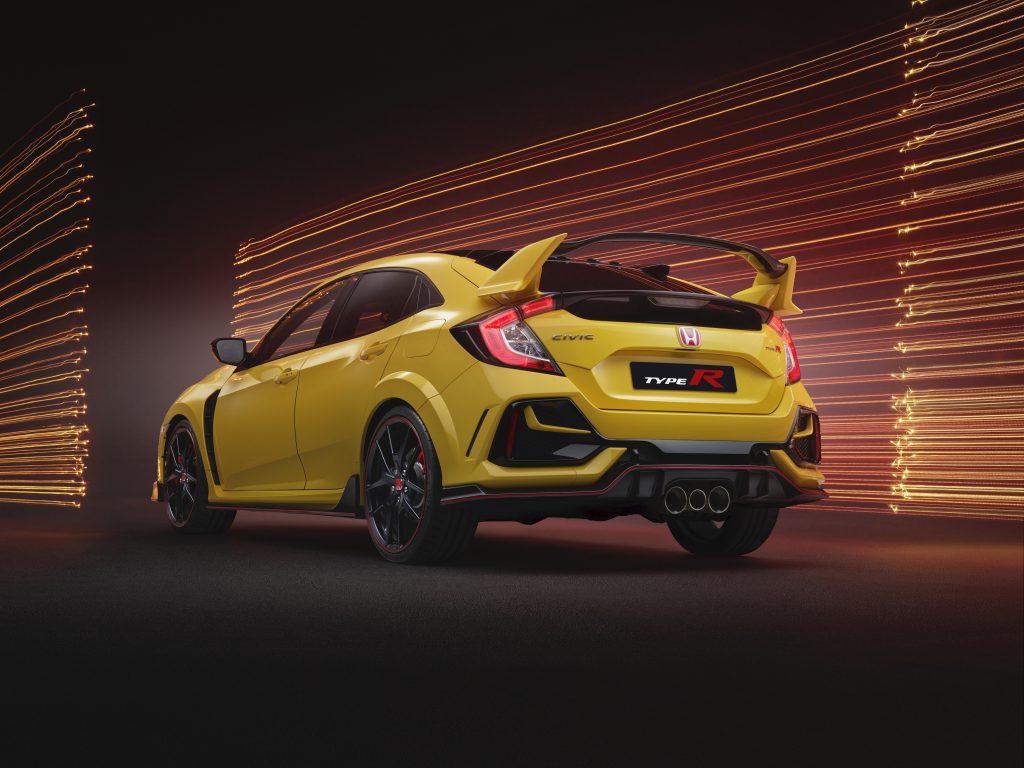
Moving closer to the GR Yaris price bracket takes us to the Honda Civic Type R, another cult car among a certain demographic. Again, front-wheel drive only, the Honda is an altogether more substantial car, bigger and heavier all round than the Yaris. It’s $490 more than the GR Yaris at $54,990, but feels more grown-up, and is palpably more luxurious, although a little too “boy racer” for some tastes. With one extra cylinder and a proper 2-litre capacity, the Type R easily tops he power and torque of the three-cylinder models, with a muscular 228kW and an impressive 400Nm.
